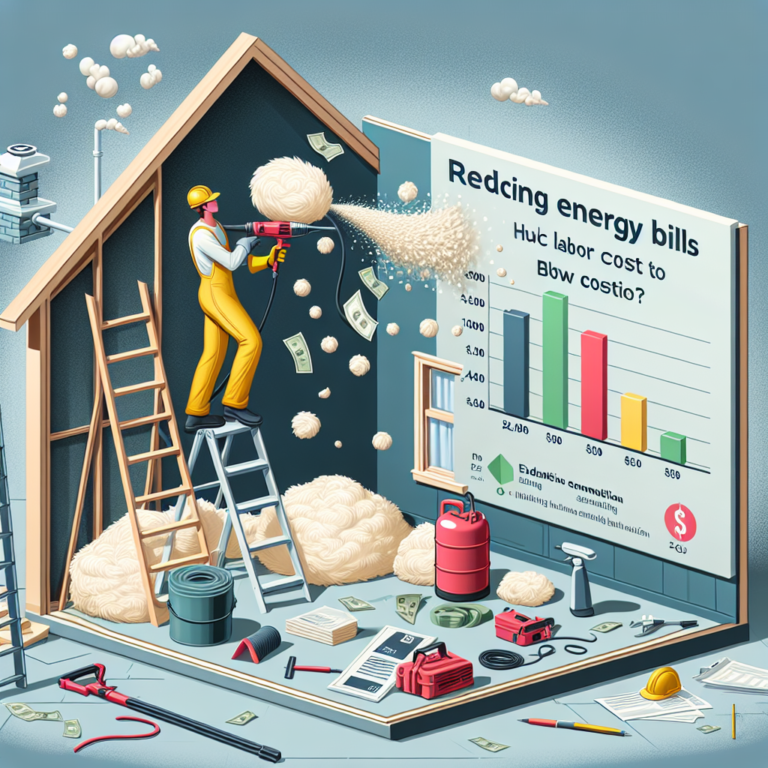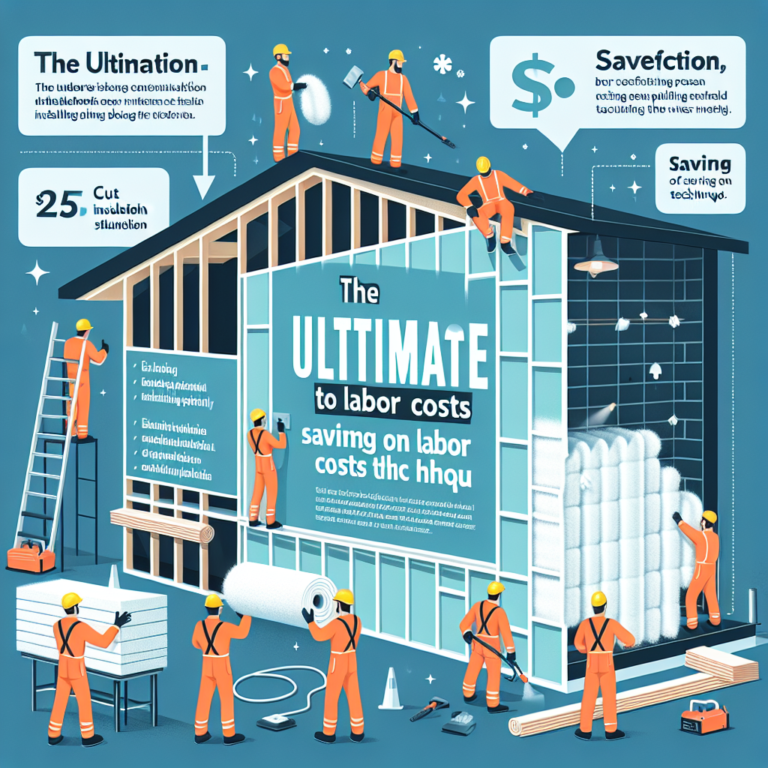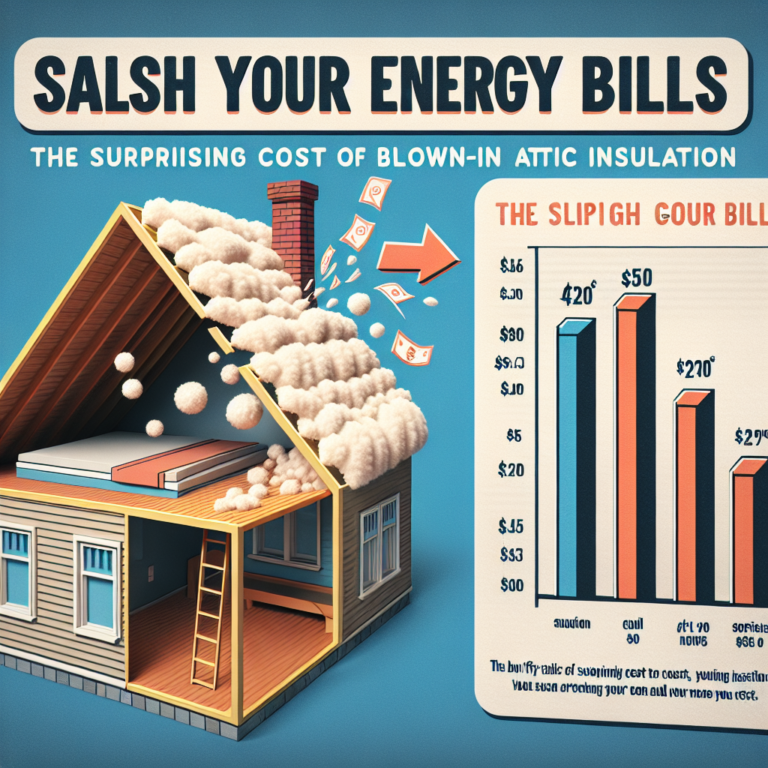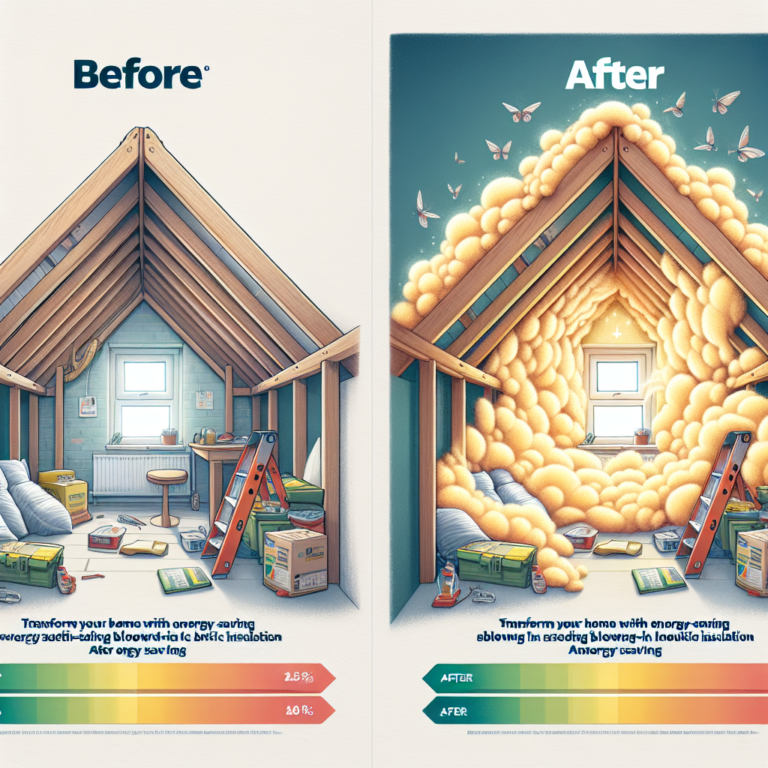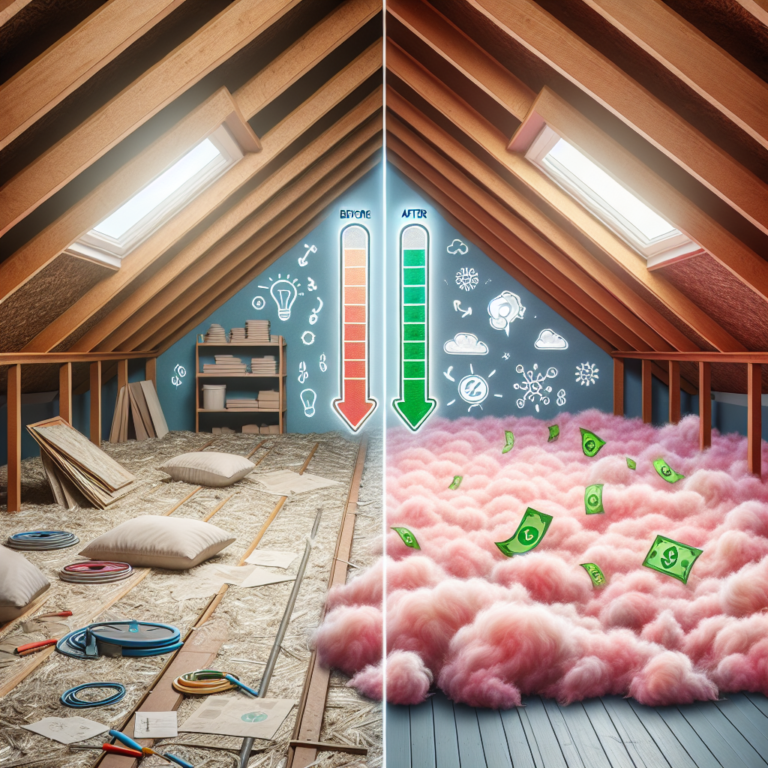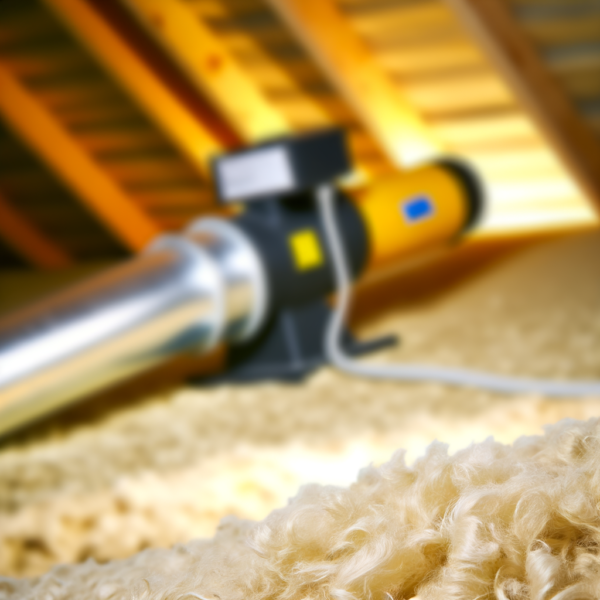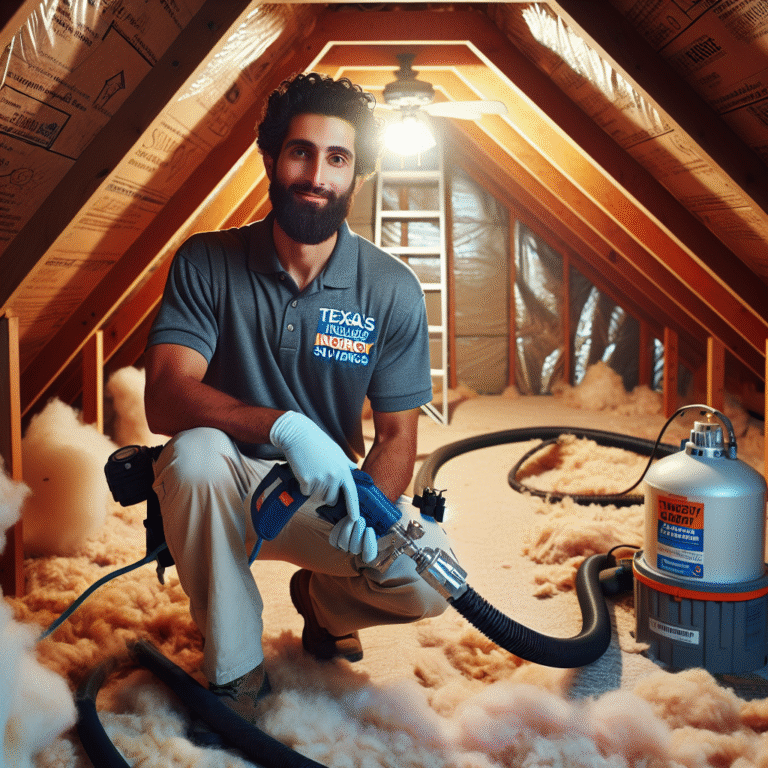-
Table of Contents
- Introduction
- Benefits of Blown In Ceiling Insulation: Discuss the advantages of using blown in insulation for ceiling insulation, such as improved energy efficiency, noise reduction, and cost-effectiveness. Highlight the benefits of hiring professional contractors for the installation process
- Factors to Consider When Choosing Blown In Insulation Contractors Near Me: Provide a checklist of important factors to consider when searching for blown in insulation contractors near you. This can include factors such as experience, certifications, customer reviews, and pricing
- DIY vs Professional Installation of Blown In Ceiling Insulation: Compare the pros and cons of DIY installation versus hiring professional contractors for blown in ceiling insulation. Discuss the potential risks and benefits of each option, as well as the level of expertise and equipment required for a successful installation
- Q&A
- Conclusion
“Efficiently insulate your home with blown-in ceiling insulation – keeping you comfortable and saving you money!”
Introduction
Blown-in ceiling insulation is a type of insulation that is installed in the ceiling of a building or home. It is made up of loose fibers or particles, such as fiberglass, cellulose, or mineral wool, that are blown into the space between the ceiling and the roof. This method of insulation is becoming increasingly popular due to its effectiveness in reducing energy costs and improving the overall comfort of a space. In this introduction, we will explore the benefits and process of blown-in ceiling insulation.
Benefits of Blown In Ceiling Insulation: Discuss the advantages of using blown in insulation for ceiling insulation, such as improved energy efficiency, noise reduction, and cost-effectiveness. Highlight the benefits of hiring professional contractors for the installation process
Blown in ceiling insulation has become a popular choice for homeowners looking to improve the energy efficiency of their homes. This type of insulation involves using a machine to blow loose insulation material, such as fiberglass or cellulose, into the ceiling cavity. The result is a tightly packed layer of insulation that provides numerous benefits for homeowners.
One of the main advantages of blown in ceiling insulation is its ability to improve energy efficiency. The insulation material creates a barrier between the interior of the home and the outside environment, preventing heat from escaping during the colder months and keeping it out during the warmer months. This means that homeowners can save on their energy bills by reducing the need for heating and cooling systems to work harder to maintain a comfortable temperature.
In addition to energy efficiency, blown in insulation also offers noise reduction benefits. The dense layer of insulation helps to absorb sound, making it an ideal choice for homes located in noisy areas or for those who want to reduce noise transfer between rooms. This can be especially beneficial for homeowners who work from home or have young children who need a quiet environment for napping or studying.
Another advantage of blown in ceiling insulation is its cost-effectiveness. While the initial cost of installation may be higher than other types of insulation, such as batt or roll insulation, the long-term savings on energy bills make it a worthwhile investment. Additionally, blown in insulation can be installed quickly and easily, reducing labor costs and making it a more affordable option for homeowners.
When it comes to the installation process, it is highly recommended to hire professional contractors. While some homeowners may attempt to install blown in insulation themselves, it is a task best left to the experts. Professional contractors have the necessary equipment and expertise to ensure that the insulation is installed correctly and evenly throughout the ceiling cavity. This is crucial for achieving maximum energy efficiency and avoiding any potential issues, such as uneven distribution or gaps in the insulation.
Furthermore, professional contractors have access to high-quality insulation materials that may not be available to the general public. This means that homeowners can trust that they are getting the best possible insulation for their home. Additionally, hiring professionals can also save homeowners time and effort, as the installation process can be completed quickly and efficiently.
Another benefit of hiring professional contractors for blown in ceiling insulation is the assurance of proper safety measures. Insulation materials can be hazardous if not handled properly, and professional contractors are trained to handle them safely. They also have the necessary safety equipment to protect themselves and the homeowners during the installation process.
In conclusion, blown in ceiling insulation offers numerous benefits for homeowners, including improved energy efficiency, noise reduction, and cost-effectiveness. However, it is important to hire professional contractors for the installation process to ensure that the insulation is installed correctly and safely. With the help of professionals, homeowners can enjoy the many advantages of blown in ceiling insulation and create a more comfortable and efficient living space.
Factors to Consider When Choosing Blown In Insulation Contractors Near Me: Provide a checklist of important factors to consider when searching for blown in insulation contractors near you. This can include factors such as experience, certifications, customer reviews, and pricing

When it comes to insulating your home, blown in insulation is a popular and effective option. This type of insulation involves using a machine to blow loose insulation material, such as fiberglass or cellulose, into your attic or walls. It is a cost-effective and efficient way to improve the energy efficiency of your home. However, choosing the right blown in insulation contractor is crucial to ensure the job is done correctly and to your satisfaction. Here are some important factors to consider when searching for blown in insulation contractors near you.
Experience is key when it comes to any home improvement project, and blown in insulation is no exception. It is important to choose a contractor who has a proven track record of successfully completing blown in insulation projects. Look for contractors who have been in the business for several years and have a portfolio of completed projects. This will give you confidence in their abilities and expertise.
Certifications are another important factor to consider when choosing a blown in insulation contractor. Look for contractors who are certified by reputable organizations such as the Insulation Contractors Association of America (ICAA) or the National Insulation Association (NIA). These certifications ensure that the contractor has received proper training and follows industry standards and best practices.
Customer reviews are a valuable resource when researching blown in insulation contractors. Look for contractors with positive reviews and satisfied customers. You can check online review sites or ask for references from the contractor. Reading about other customers’ experiences can give you insight into the contractor’s work ethic, communication skills, and overall satisfaction with the project.
Pricing is also an important factor to consider when choosing a blown in insulation contractor. While it may be tempting to go with the cheapest option, it is important to remember that quality work comes at a price. Be wary of contractors who offer significantly lower prices than their competitors, as this may be a red flag for subpar work. It is also important to get quotes from multiple contractors and compare them to ensure you are getting a fair price.
Another factor to consider is the type of insulation material the contractor uses. Blown in insulation can be made from various materials, such as fiberglass, cellulose, or mineral wool. Each material has its own benefits and drawbacks, so it is important to discuss with the contractor which material would be best for your home and budget.
Communication is key when working with any contractor, and blown in insulation contractors are no exception. Choose a contractor who is responsive and communicates clearly and effectively. They should be able to answer any questions you have and provide updates on the progress of the project.
Lastly, consider the contractor’s availability and timeline for completing the project. It is important to choose a contractor who can work within your desired timeline and is available to address any issues that may arise after the project is completed.
In conclusion, choosing the right blown in insulation contractor is crucial for a successful and satisfactory project. Consider factors such as experience, certifications, customer reviews, pricing, insulation material, communication, and availability when researching and selecting a contractor. By taking the time to thoroughly evaluate these factors, you can ensure that your home is properly insulated and energy-efficient for years to come.
DIY vs Professional Installation of Blown In Ceiling Insulation: Compare the pros and cons of DIY installation versus hiring professional contractors for blown in ceiling insulation. Discuss the potential risks and benefits of each option, as well as the level of expertise and equipment required for a successful installation
Blown in ceiling insulation is a popular method of insulating homes, as it provides a cost-effective and efficient way to keep your home warm in the winter and cool in the summer. This type of insulation involves using a machine to blow loose insulation material, such as fiberglass or cellulose, into the ceiling cavity. While this may seem like a simple task, it is important to consider whether you should attempt a DIY installation or hire professional contractors for the job.
One of the main benefits of DIY installation is the cost savings. By purchasing the insulation material and renting the necessary equipment, you can potentially save hundreds or even thousands of dollars compared to hiring professionals. Additionally, you have the flexibility to work at your own pace and on your own schedule. However, it is important to note that DIY installation requires a certain level of expertise and knowledge to ensure a successful and safe installation.
On the other hand, hiring professional contractors for blown in ceiling insulation may come with a higher upfront cost, but it also offers several advantages. Firstly, professional contractors have the necessary experience and expertise to properly install the insulation, ensuring that it is done correctly and efficiently. They also have access to specialized equipment, which can result in a more thorough and effective installation. Furthermore, hiring professionals can save you time and effort, as they will handle all aspects of the installation process, from preparing the space to cleaning up afterwards.
When considering the risks of DIY installation, it is important to note that blown in ceiling insulation can be a messy and physically demanding task. The insulation material can be irritating to the skin and eyes, and the process of blowing it into the ceiling cavity can be physically strenuous. Additionally, if the insulation is not installed properly, it can lead to air leaks and reduced effectiveness, which can result in higher energy bills and discomfort in your home.
On the other hand, hiring professional contractors can also come with its own set of risks. It is important to do your research and choose a reputable and experienced company to ensure a successful installation. There have been cases of inexperienced or unqualified contractors causing damage to homes during the installation process, which can result in costly repairs. It is also important to consider the potential for delays or scheduling conflicts when working with contractors, as they may have other projects and commitments.
In terms of the level of expertise and equipment required for a successful installation, DIY may seem like the more accessible option. However, it is important to note that blown in ceiling insulation requires specialized equipment, such as a blowing machine and protective gear, which can be expensive to rent or purchase. Additionally, proper knowledge and technique are crucial for a successful installation, as the insulation needs to be evenly distributed and packed tightly to ensure maximum effectiveness.
In conclusion, when deciding between DIY installation and hiring professional contractors for blown in ceiling insulation, it is important to weigh the potential risks and benefits of each option. While DIY may offer cost savings and flexibility, it also requires a certain level of expertise and can be physically demanding. Hiring professionals may come with a higher upfront cost, but it offers the assurance of a properly installed and effective insulation. Ultimately, the decision will depend on your budget, time constraints, and comfort level with DIY projects. Whichever option you choose, it is important to prioritize safety and effectiveness to ensure a comfortable and energy-efficient home.
Q&A
Q: What is blown in ceiling insulation?
A: Blown in ceiling insulation is a type of insulation material that is installed by blowing it into the space between the ceiling and the roof of a building. It is typically made of materials such as fiberglass, cellulose, or mineral wool and helps to reduce heat loss and improve energy efficiency in a building.
Q: How is blown in ceiling insulation installed?
A: Blown in ceiling insulation is installed using a special machine that blows the insulation material into the space between the ceiling and roof. The machine breaks up the insulation material into small pieces and then blows it through a hose into the desired area. This method allows for a more even distribution of the insulation and can be done quickly and efficiently.
Q: What are the benefits of blown in ceiling insulation?
A: Blown in ceiling insulation can provide several benefits, including improved energy efficiency, reduced heating and cooling costs, and increased comfort in the building. It can also help to reduce noise levels and prevent the formation of ice dams on the roof. Additionally, blown in insulation is often more cost-effective and easier to install than traditional batt insulation.
Conclusion
In conclusion, blown-in ceiling insulation is a highly effective and efficient method of insulating a home or building. It provides numerous benefits such as improved energy efficiency, reduced utility costs, and increased comfort. Additionally, it is a cost-effective and environmentally friendly option compared to other insulation methods. With proper installation and maintenance, blown-in ceiling insulation can greatly improve the overall insulation and energy efficiency of a structure. It is a worthwhile investment for any homeowner or building owner looking to improve the insulation and comfort of their space.


